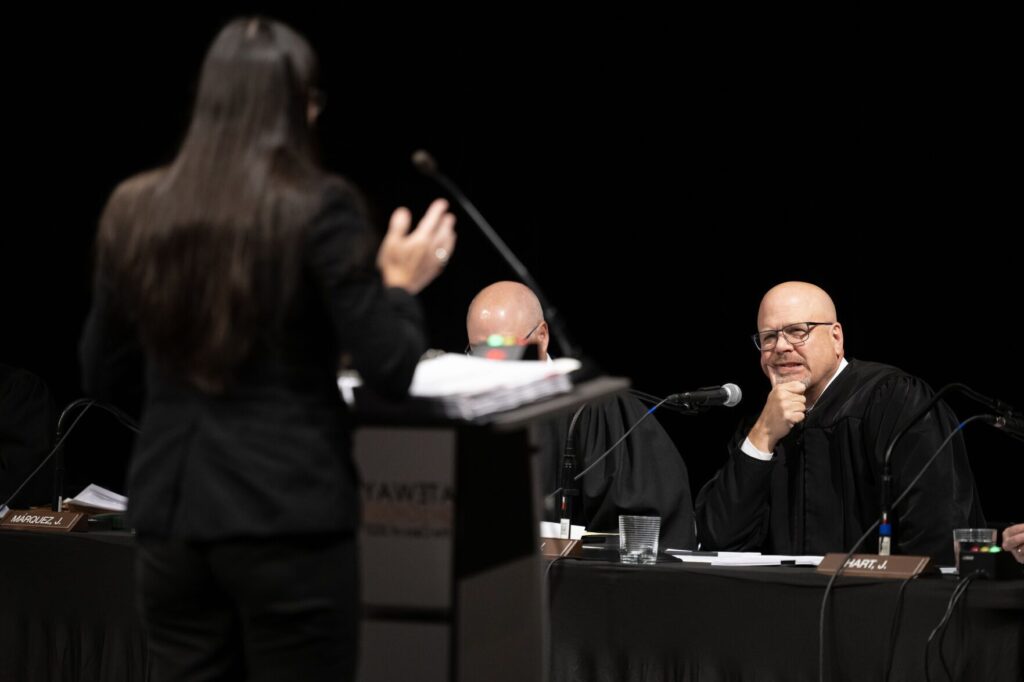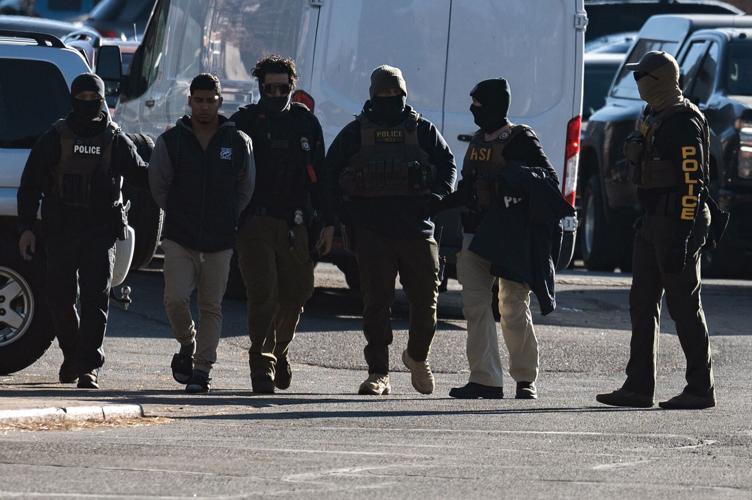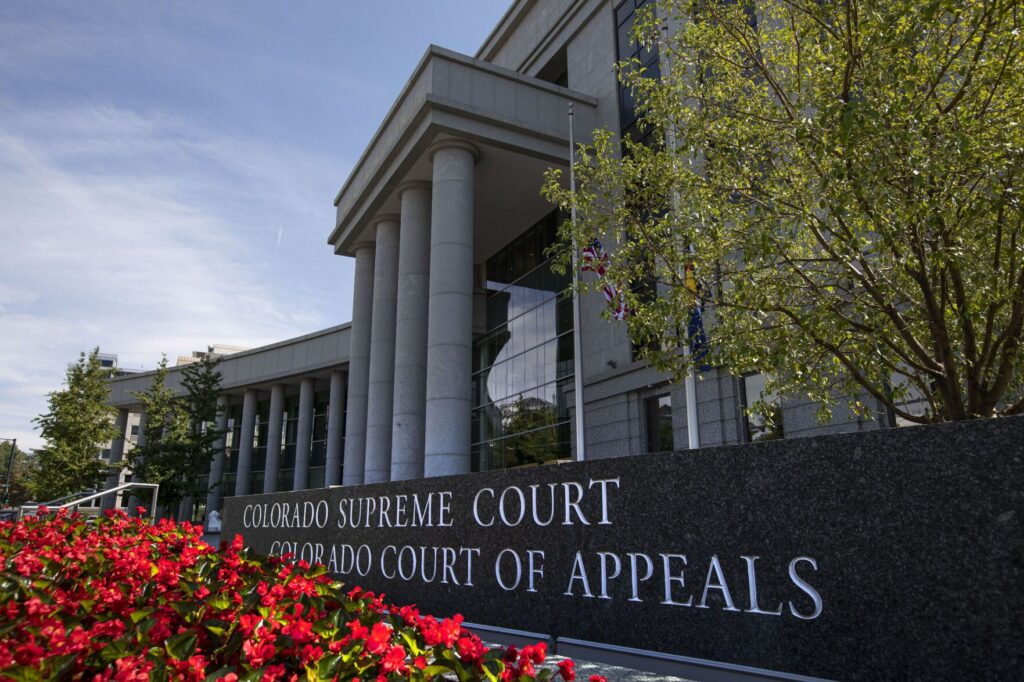Appeals court reluctantly agrees dismissal of Hispanic juror not a constitutional violation

Despite its deep skepticism that Adams County prosecutors removed a Hispanic juror from a Hispanic defendant’s trial for reasons other than race, Colorado’s second-highest court on Thursday nevertheless found the prosecution’s conduct did not amount to a violation of the constitutional prohibition on race-based dismissals.
A three-judge panel for the Court of Appeals emphasized the Colorado Supreme Court’s precedent required it to uphold David Nuñez-Hernandez’s convictions, while at the same time registering discomfort with how the prosecution and Chief Judge Don Quick handled the dismissal of a Hispanic man identified as Juror H. For example, the prosecutor claimed Juror H’s prior service on a jury was a legitimate nonracial reason for dismissing him.
Yet, she “expressed no similar concern about three other individuals with prior jury experience, all of whom sat on the jury,” wrote Judge Neeti Vasant Pawar in the panel’s Dec. 8 opinion.
The U.S. Supreme Court recognized that race-based “strikes” of jurors are unconstitutional in its 1986 decision of Batson v. Kentucky. There, prosecutors in Kentucky used peremptory strikes – meaning dismissals that do not require a reason – to remove all of the Black people from the Black defendant’s jury, leaving an all-white body to convict him.
Now, defendants may raise “Batson challenges” in response to the dismissal of a juror of color. The challenge triggers a three-step process, in which the defense must first make a surface-level claim that race is behind the strike, and then the prosecution needs to provide “race-neutral” reasons for their actions.
At the third step, it is the trial judge’s job to weigh the information and decide if purposeful racial discrimination is likely taking place.
Nuñez-Hernandez stood trial in December 2017 on charges of careless driving and leaving the scene of an accident. Juror H was one of multiple people in the jury pool who had previously served on a jury. During voir dire, which is the part of jury selection when the parties ask questions of potential jurors, Nuñez-Hernandez’s attorney asked Juror H if he was the “kind of guy who would want to hear all of the facts about everything that you can, if you can.”
“Absolutely,” Juror H replied. “You can’t make a good decision without having the entire story.”
Although the defense attorney attempted to ask a follow-up question about hypothetical evidence, Quick stopped him. Juror H did not answer further questions.
The prosecution successfully dismissed another Hispanic man, Juror E. But Nuñez-Hernandez raised a Batson challenge during the attempted strike of Juror H, who appeared to then be the only Hispanic person left on the jury panel.
Prosecutor Kathryn Webb first attempted to justify striking Juror H by claiming the defense “needs to show a pattern” of removing jurors of color. Webb believed that, notwithstanding the dismissal of Juror E, there was no pattern.
For her race-neutral reason, Webb alleged that “research studies have shown that statistically, when a juror has prior jury service, it’s not favorable” to the prosecution. The judge asked whether it was a “matter of course” for Webb to remove people whenever they have prior jury service.
“I’m not going to say it’s a matter of course,” she replied.
A second prosecutor, Scott Blaha, then stepped in to claim Juror H said he “needed to see, like, the entirety of the evidence, which indicated to us that he would be a risk in a case like this” where some pieces of evidence would not be available.
“I do remember him giving that answer,” Quick responded, even though Juror H’s actual statement did not align with that recollection. Quick rejected Webb’s justification for striking Juror H based on his prior jury service, saying he had not “seen any studies” justifying the removal of jurors due to previous service.
Quick did allow for the dismissal of Juror H, however, based on his “response to the hypothetical that (defense counsel) asked him about what evidence there would be or what evidence there wouldn’t be.” In reality, Quick had blocked Nuñez-Hernandez’s lawyer from asking the question about evidence.
Nuñez-Hernandez’s jury convicted him and he received a sentence of six years in prison.
On appeal, Nuñez-Hernandez pointed out that there is no requirement in a Batson challenge to demonstrate a pattern of race-based juror strikes. He questioned why Webb had not removed the other, non-Hispanic jurors who had prior jury service if her concern about Juror H was genuine. Finally, he did not believe Quick or Blaha should get a pass for misremembering what Juror H actually said.
“(D)iscriminatory strikes should not be allowed whenever prosecutors truly do not listen to what minority jurors say,” wrote Deputy State Public Defender Jacob B. McMahon.
In response, the government tacitly admitted the strike of Juror H may appear discriminatory at face value, but argued the Court of Appeals should respect Quick’s determination that the prosecutors’ ultimate explanation was credible.
“Perhaps a different court – maybe even this Court – would have found the circumstances of the prosecution’s response suspicious. But this is irrelevant,” wrote Assistant Attorney General Patrick A. Withers.
The appellate panel reviewed the actions of the two prosecutors and Quick, and found several pieces to be concerning. First, there was Webb’s misstatement about a pattern of discrimination being necessary. Second, was her assertion that statistics show jurors with prior jury service are less likely to be favorable to the prosecution. Colorado Politics found no research suggesting that conclusion, and multiple studies indicating the opposite to be true.
“Beyond the trial court’s own expressions of skepticism, the prosecutor also admitted that she did not strike jurors with prior jury experience as a ‘matter of course,’ but ‘chose’ to use ‘the reason’ only to remove Juror H – the only remaining Hispanic juror,” Pawar wrote.
The panel also felt concerned that the prosecutors did not excuse non-Hispanic jurors who, like Juror H, spoke about having a complete picture of the evidence. The court further observed Quick based his decision on a misremembrance of what Juror H actually said.
However, Pawar explained the state Supreme Court has limited review of Batson challenges to whether a trial judge considered all circumstances and whether support existed for the decision. In this case, Quick’s decision was valid.
“We recognize the weakness of the prosecutor’s reasons for striking Juror H,” she wrote. But “we cannot reweigh the factors to reach a different conclusion.”
The 17th Judicial District Attorney’s Office, which prosecutes cases in Adams County, declined to comment on the opinion.
The original Batson decision described the harm from excluding jurors of color as not only affecting the defendant and the juror themselves, but as also undermining public confidence in the fairness of the justice system. However, the ensuing three-step process for Batson challenges has generated criticism for being applicable only to those instances of intentional discrimination where a trial judge disbelieves the prosecution’s stated justification, to the exclusion of other instances of bias.
In response, the Colorado Supreme Court has scheduled a hearing for February to consider new rules governing racial bias in juror strikes. The proposal, if enacted, would eliminate the requirement for trial judges to find purposeful racial discrimination, and to instead only decide whether an “objective observer” could reasonably view race or ethnicity as a factor in the dismissal.
The panel also rejected another claim Nuñez-Hernandez made on appeal, that Quick had attempted to explain the concept of reasonable doubt to jurors by using an analogy to driving. Earlier this year, the Colorado Supreme Court overturned a defendant’s conviction, also in Adams County, because the trial judge had lowered the burden needed for a conviction due to a faulty comparison of reasonable doubt to everyday events.
The appellate panel did not believe Quick’s analogy was problematic enough to warrant a new trial, but his comments “were more confusing than helpful, tended to minimize the gravity of the burden of proof standard, and trivialized the jury’s role in determining a defendant’s guilt,” Pawar warned.
The case is People v. Nuñez-Hernandez.














